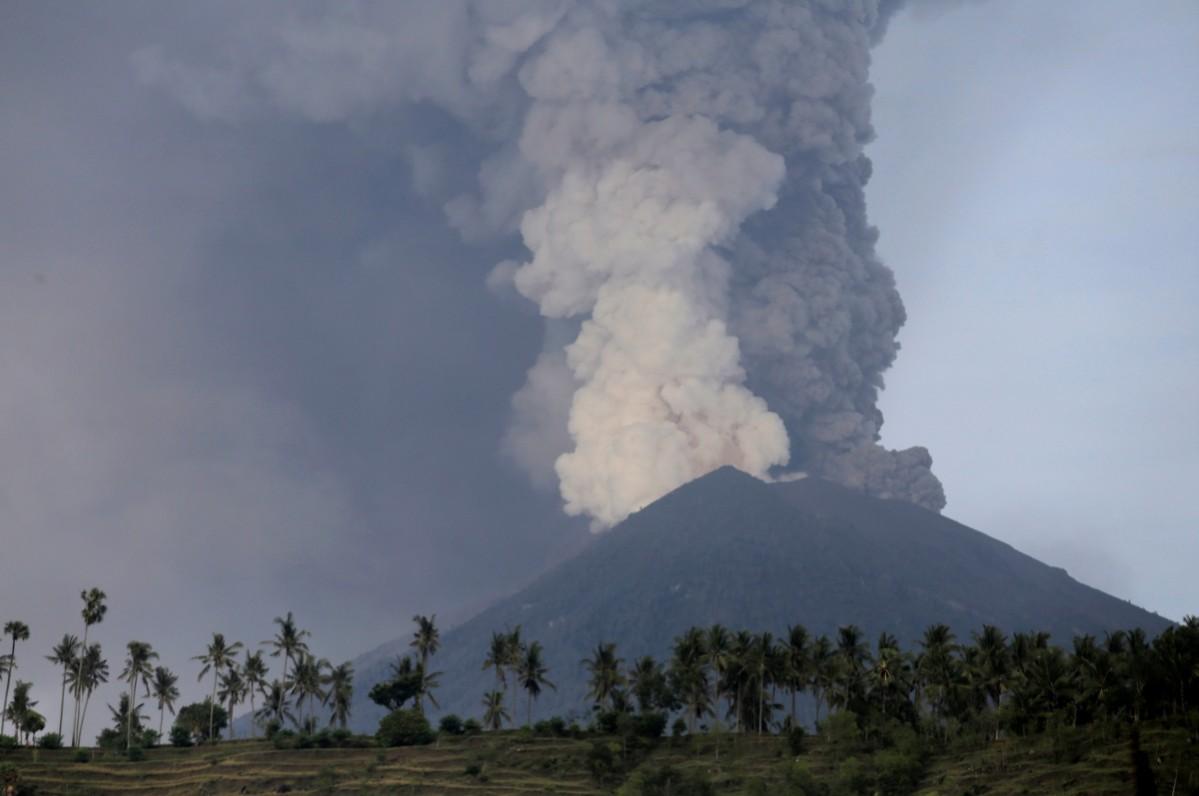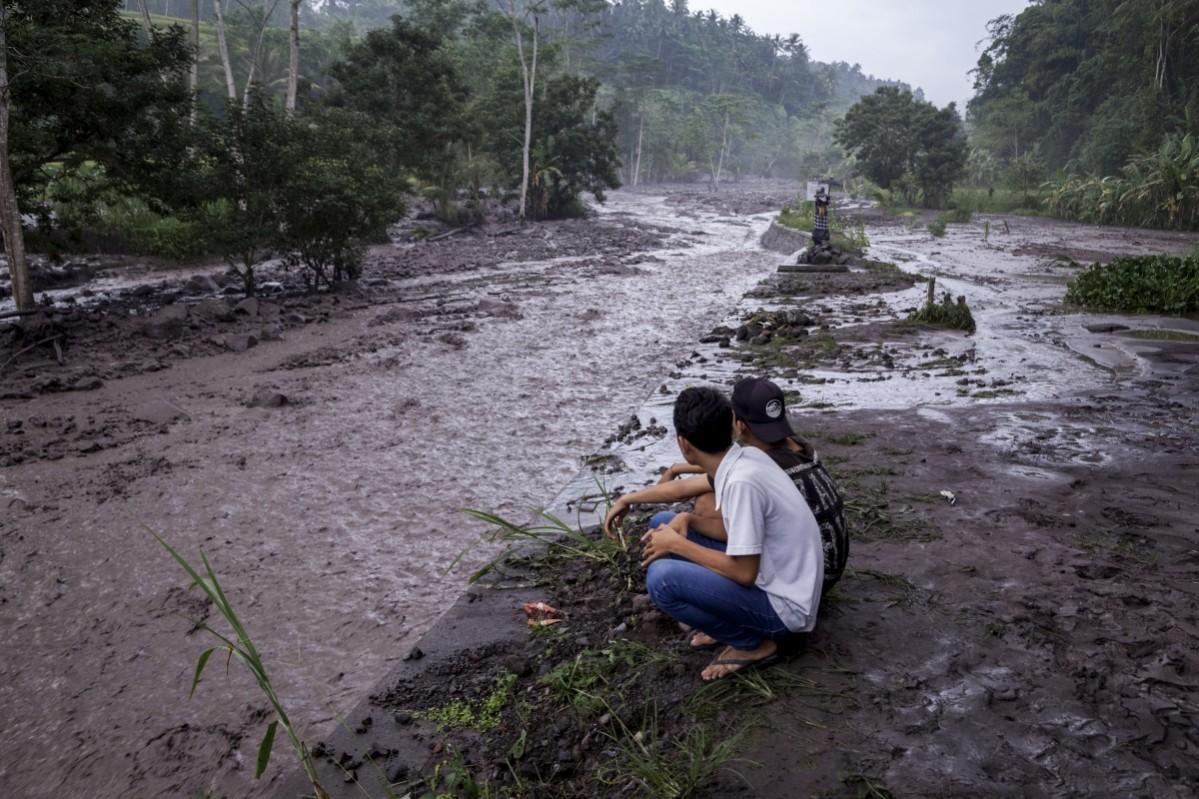
As the Mount Agung volcano in Bali, Indonesia, continues to spew ash and release massive amounts of smoke that can be seen billowing 9,800 feet above its cone, authorities have said that the situation is dangerous and that the volcano might explode any minute.
The volcano is now said to be moving to the magmatic phase and lava could soon start flowing into the island nation. In view of this, Indonesian authorities have sounded the highest level of alert and the island's Ngurah Rai International Airport, as well as the Lombok airport, remain closed for the second day.

Meanwhile, Indians stranded in Bali have been asked to get in touch with the Indian Consulate in the island nation. A helpdesk has been set up at the airport in case of an emergency and Minister of External Affairs Sushma Swaraj has asked citizens not to worry.
Consulate General of India, Bali has a helpdesk at Bali airport to assist Indian nationals in Bali affected by Mt. Agung eruption. It's operational from 9 am & is on 2nd floor of International terminal. Please approach us for assistance. @IndianDiplomacy @MEAIndia @IndianEmbJkt.
— India in Bali (@cgibali) November 27, 2017
Indians in Bali - Pls do not worry. Pradeep Rawat Indian Ambassador in Jakarta @IndianEmbJkt and Sunil Babu Consul General @cgibali are on the job and I am monitoring this personally.
— Sushma Swaraj (@SushmaSwaraj) November 27, 2017
I have just spoken to Pradeep Rawat Indian Ambassador in Jakarta @IndianEmbJkt. We have set up a facilitation centre at the airport and are providing assistance to the stranded Indian nationals there. I am in constant touch with our mission. @cgibali
— Sushma Swaraj (@SushmaSwaraj) November 28, 2017
Warning residents of the danger that the Mt Agung volcano poses, MAGMA Indonesia tweeted: "Tonight, for the first time a thermal anomaly was detected in the crater of Mount Agung by Nasa Modis satellite, about 70 megawatts of power. This indicates that a significant volume of magma had been on the surface."

While 25,000 residents of Bali had been earlier moved to a safer location, Indonesian authorities have said that the intensity of volcanic ash has now increased, due to which over 100,000 people have now been asked to leave their homes behind and move to areas that are further away from the rumbling volcano.

However, evacuation is turning out to be quite a challenge for authorities as many residents have refused to leave. Speaking about why these residents are being adamant, National Disaster Management Agency spokesperson Sutopo Purwo Nugroho told Express UK: "They feel safe because the area was not damaged during the 1963 eruption. They will evacuate if it is dangerous."

Nugroho also explained that this time the explosion may be bigger than it was in 1963 and said that the volcanic activity on the mountain is likely to continue for a while.
Meanwhile, with airports shut down and hundreds of flights cancelled, thousands of tourists are stranded on the island and are waiting to go back home. Airport spokesman Air Ahsanurrohim confirmed to the daily that the shut down had affected at least 59,000 travellers.

The national disaster management agency has also said that there could be an increase in the amount of cold lava flowing out and has asked residents to avoid going to rivers.
"Continuous ash puffs are sometimes accompanied by explosive eruptions accompanied by a weak sound of boom," the national board for disaster management wrote on Facebook. "The rays of fire are increasingly observed at night. This indicates the potential for a larger eruption is imminent."

The last time that the Mount Agung volcano exploded was in the year 1963. The residents of the island heard explosions and rumbles in February and Agung erupted a month later, killing over 2,000 people and devastating several villages.
??Rain lava floods (cold lava) have occurred in some places on the slopes of Mount Gunung Agung.#Agung #volcano #Bali #alert pic.twitter.com/dqA0xjpmJ9
— Charles Baudry (@CharlesBaudry) November 27, 2017
This year, the Mount Agung volcano started rumbling late September, and over 700 tremors were recorded in just one day. The strongest tremor was measured at 4.3 on the Richter scale and that sent tourists and adventure lovers scurrying away for life. The bustling islands of Bali and Vanuatu wore a deserted look as even residents moved to safety.













!['It's not Mumbai traffic, it's air traffic': Suriya apologises to Mumbai media after paparazzi yelled At Him for making them wait for hours [Watch]](https://data1.ibtimes.co.in/en/full/806234/its-not-mumbai-traffic-its-air-traffic-suriya-apologises-mumbai-media-after-paparazzi.jpg?w=220&h=138)



